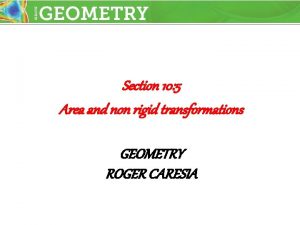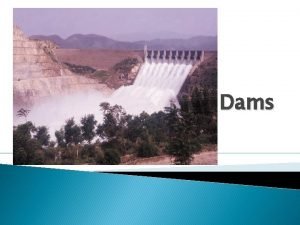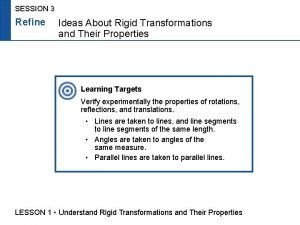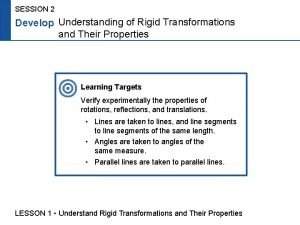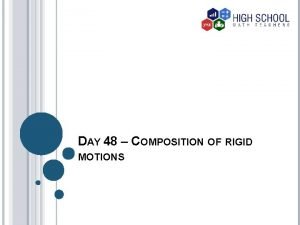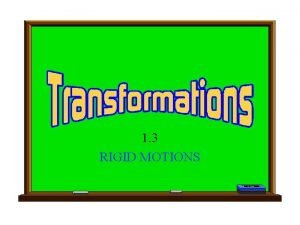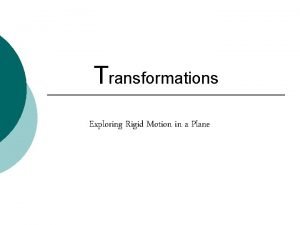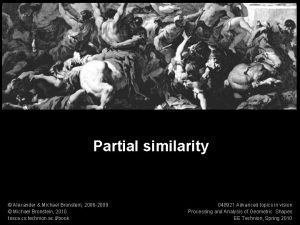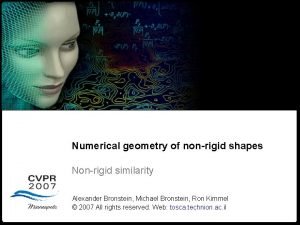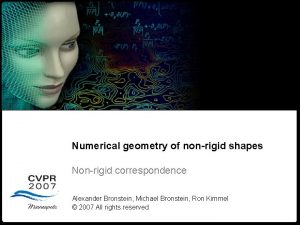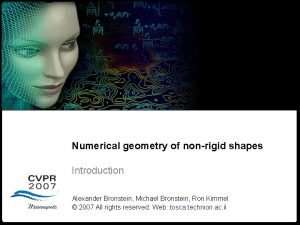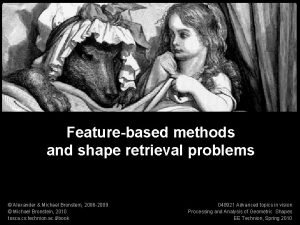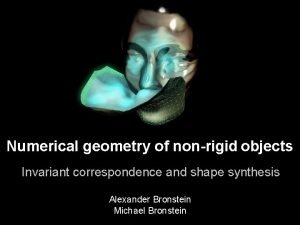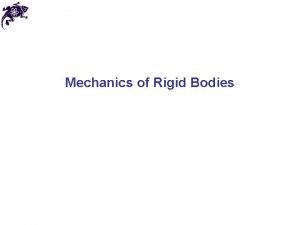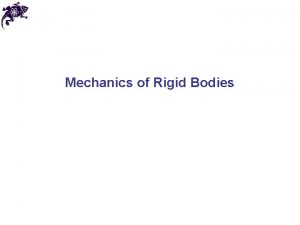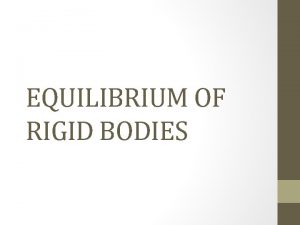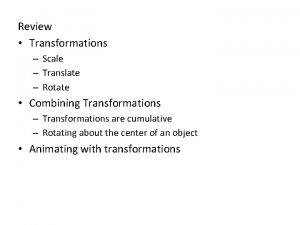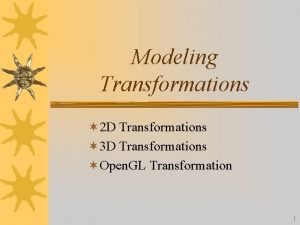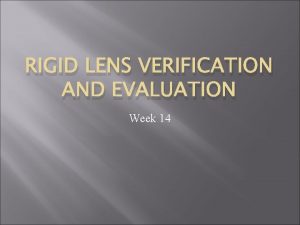Section 10 5 Area and non rigid transformations















- Slides: 15

Section 10: 5 Area and non rigid transformations GEOMETRY ROGER CARESIA


Find Areas of Similar Polygons If ABCD ~ PQRS and the area of ABCD is 48 square inches, find the area of PQRS. Theorem 10. 1 48 = 6(BC) Use the area formula to find the length of BC.

Find Areas of Similar Polygons BC = 8 Solve for x. Cross multiply. 64 x = 3888 Divide by 64. x = 60. 75 Answer: So, the area of PQRS is 60. 75 square inches.

If EFGH ~ LMNO and the area of EFGH is 40 square inches, find the area of LMNO. A. 180 ft 2 B. 270 ft 2 C. 360 ft 2 D. 420 ft 2

Use Areas of Similar Figures The area of ΔABC is 98 square inches. The area of ΔRTS is 50 square inches. If ΔABC ~ ΔRTS, find the scale factor from ΔABC to ΔRTS and the value of x. Let k be the scale factor between ΔABC and ΔRTS.

Use Areas of Similar Figures Theorem 11. 1 Substitution Simplify. Take the positive square root of each side. So, the scale factor from ΔABC to ΔRTS is Use the scale factor to find the value of x.

Use Areas of Similar Figures The ratio of corresponding lengths of similar polygons is equal to the scale factor between the polygons. Substitution 7 x = 14 ● 5 Cross Products Property. 7 x = 70 Multiply. x = 10 Answer: x = 10 Divide each side by 7.

Use Areas of Similar Figures CHECK Confirm that factor. is equal to the scale

The area of ΔTUV is 72 square inches. The area of ΔNOP is 32 square inches. If ΔTUV ~ ΔNOP, use the scale factor from ΔTUV to ΔNOP to find the value of x. A. 3 inches B. 4 inches C. 6 inches D. 12 inches

Changing Dimensions CRAFTS Jonathon has a banner that measures 1. 5 feet by 6 feet. He makes two additional banners that measure 3 feet by 12 feet and 3 feet by 10 feet, respectively. Describe how the difference in dimensions affects the areas of the banners.

Changing Dimensions Compare the ratios of the sides of the first and second banner. They have increased by a scale factor of 2. Compare the areas of the first and second banner. The area of the second banner is 4 times greater. Compare the ratios of the sides of the first and third banner. The increase is not proportional.

Changing Dimensions Compare the areas of the first and third banner. The area of the third banner is 3. 34 times greater. Answer: The dimensions of the first banner increase proportionally by a scale factor of 2, so the area of the first banner is 4 times the area of the original banner. On the second banner, the width doubles and the length increases by a factor of about 1. 67 so it is a nonproportional change. The area of the second banner increases by the product of the scale factors of each dimension, so the area is 3. 34 times greater than the area of the original.

MODELS The area of one hood of a car is 35 square feet. The area of the hood of a model is 6 square inches. If the car is 14 feet long, about how long is the model? A. 4. 3 inches B. 5. 8 inches C. 6. 7 inches D. 7. 2 inches

Homework Assignment PAGE #767 #6 -#13
 10-5 area and nonrigid transformations
10-5 area and nonrigid transformations Non overflow dam
Non overflow dam Irrational function graph
Irrational function graph Understanding rigid transformations and their properties
Understanding rigid transformations and their properties Abcye
Abcye Composition of rigid motions
Composition of rigid motions Introduction to rigid transformations
Introduction to rigid transformations Frieze pattern
Frieze pattern Je sers un sauveur tendre lyrics
Je sers un sauveur tendre lyrics Non rigid
Non rigid Numerical geometry of non-rigid shapes
Numerical geometry of non-rigid shapes Non rigid
Non rigid Alexander bronstein
Alexander bronstein Non rigid
Non rigid Non rigid
Non rigid Numerical geometry of non-rigid shapes
Numerical geometry of non-rigid shapes
